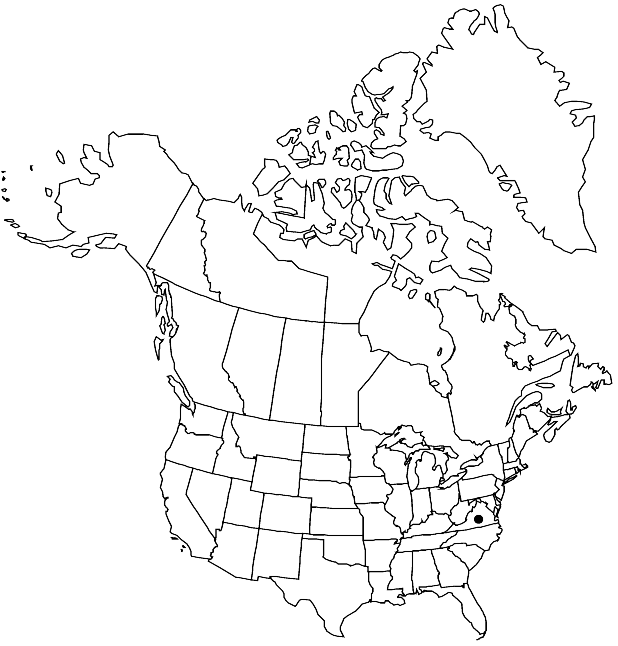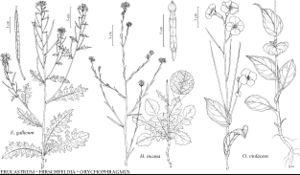Difference between revisions of "Orychophragmus violaceus"
Bot. Jahrb. Syst. 54(Beibl. 119): 56. 1916.
FNA>Volume Importer |
imported>Volume Importer |
||
| (3 intermediate revisions by 2 users not shown) | |||
| Line 10: | Line 10: | ||
|name=Brassica violacea | |name=Brassica violacea | ||
|authority=Linnaeus | |authority=Linnaeus | ||
| + | |rank=species | ||
|publication_title=Sp. Pl. | |publication_title=Sp. Pl. | ||
|publication_place=2: 667. 1753 | |publication_place=2: 667. 1753 | ||
| Line 27: | Line 28: | ||
|habitat=Railroad tracks | |habitat=Railroad tracks | ||
|distribution=Va.;Asia (China;Japan;Korea). | |distribution=Va.;Asia (China;Japan;Korea). | ||
| + | |introduced=true | ||
|discussion=<p>This is the first report of <i>Orychophragmus violaceus</i> as naturalized in North America, though I have seen the plant cultivated as an ornamental in multiple places. The record is based on Wright 3145 (GH), a collection made on 12 May 1987 in the woods along Southern Railroad tracks in Richmond, Virginia; it is the very same collection on which R. C. Rollins (1993) based his record of Moricandia arvensis (Linnaeus) de Candolle for North America. The species appears to be spreading in other locations in the neighboring areas (Rollins).</p> | |discussion=<p>This is the first report of <i>Orychophragmus violaceus</i> as naturalized in North America, though I have seen the plant cultivated as an ornamental in multiple places. The record is based on Wright 3145 (GH), a collection made on 12 May 1987 in the woods along Southern Railroad tracks in Richmond, Virginia; it is the very same collection on which R. C. Rollins (1993) based his record of Moricandia arvensis (Linnaeus) de Candolle for North America. The species appears to be spreading in other locations in the neighboring areas (Rollins).</p> | ||
|tables= | |tables= | ||
| Line 36: | Line 38: | ||
-->{{#Taxon: | -->{{#Taxon: | ||
name=Orychophragmus violaceus | name=Orychophragmus violaceus | ||
| − | |||
|authority=(Linnaeus) O. E. Schulz | |authority=(Linnaeus) O. E. Schulz | ||
|rank=species | |rank=species | ||
| Line 51: | Line 52: | ||
|publication year=1916 | |publication year=1916 | ||
|special status= | |special status= | ||
| − | |source xml=https:// | + | |source xml=https://bitbucket.org/aafc-mbb/fna-data-curation/src/2e0870ddd59836b60bcf96646a41e87ea5a5943a/coarse_grained_fna_xml/V7/V7_660.xml |
|tribe=Brassicaceae tribe Brassiceae | |tribe=Brassicaceae tribe Brassiceae | ||
|genus=Orychophragmus | |genus=Orychophragmus | ||
Latest revision as of 22:35, 5 November 2020
Stems (0.6–)1.5–6(–9) dm, often branched distally, glabrous or sparsely to densely pilose. Basal leaves: petiole (1–)2–8(–11) cm; blade or terminal lobe cordate, reniform, broadly ovate, or suborbicular, (0.4–)1.5–10(–14) cm × (3–)10–40(–70) mm, base usually cordate, rarely obtuse, margins coarsely crenate with teeth ending in apiculae, apex acute or obtuse; lobes (0 or) 1–6 each side, sessile or petiolulate (to 3 × 2 cm), glabrous or pilose. Cauline leaves sessile or petiolate; (distal) blade (0.5–)2–9(–15) cm × (2–)10–60(–90) mm, base sometimes auriculate or amplexicaul, margins dentate or entire, apex acute or acuminate (auricles to 3 × 4 cm); lobes (0 or) 1–4 each side, sessile or petiolulate, glabrous or pilose. Fruiting pedicels (0.6–)0.8–2(–3) cm, narrower than fruit, glabrous or pilose. Flowers: sepals connivent, (6–)8–13(–16) × 1.5–2.5 mm; petals (12–)16–25(–32) × (4–)5–9(–11) mm; filaments 8–18 mm; anthers (3–)4–6(–8) mm. Fruits (3–)4.5–11(–13) cm × 1.5–3 mm; style (0.3–)0.7–3(–5.5) cm; stigma slightly to distinctly 2-lobed. Seeds 2–3(–3.5) × 1–2 mm. 2n = 24.
Phenology: Flowering Mar–Jun.
Habitat: Railroad tracks
Distribution

Introduced; Va., Asia (China, Japan, Korea).
Discussion
This is the first report of Orychophragmus violaceus as naturalized in North America, though I have seen the plant cultivated as an ornamental in multiple places. The record is based on Wright 3145 (GH), a collection made on 12 May 1987 in the woods along Southern Railroad tracks in Richmond, Virginia; it is the very same collection on which R. C. Rollins (1993) based his record of Moricandia arvensis (Linnaeus) de Candolle for North America. The species appears to be spreading in other locations in the neighboring areas (Rollins).
Selected References
None.
